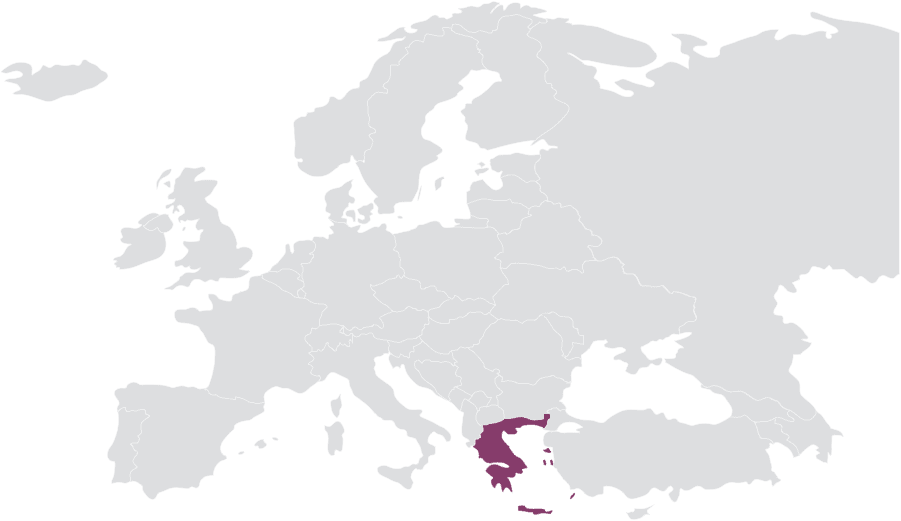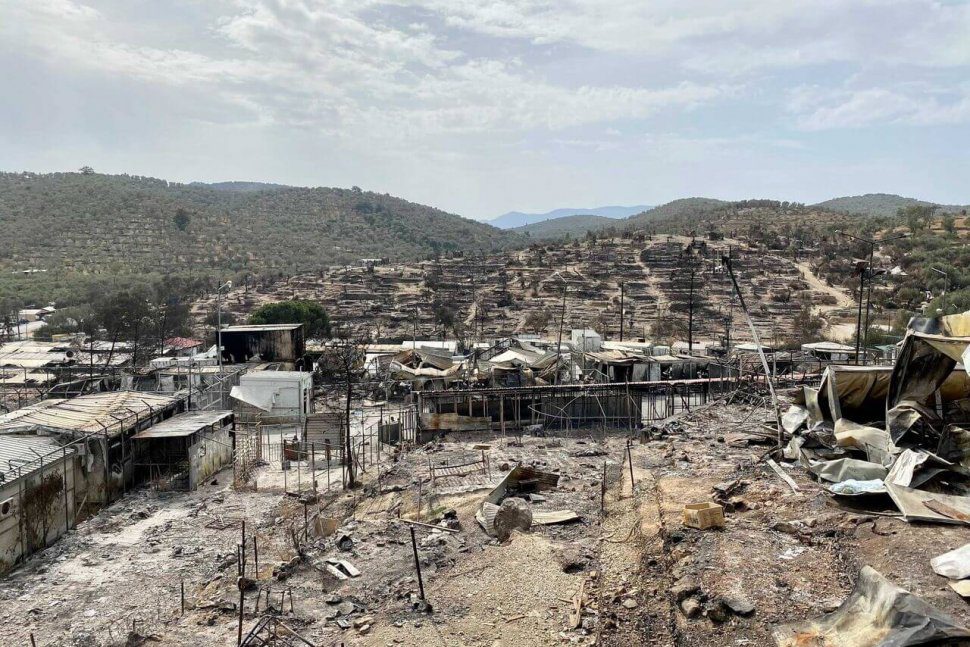
Greece

In 2015, 856,000 people passed through the Greek islands, and in 2017 and 2018 only just under 30 thousand (according to UNHCR). But 2019 brought already a growth – over 60,000 newcomers. Practice shows that you can get stuck in Lesbos for a good few years. Nikos and Katerina run a small restaurant on the island, where every refugee can feel at home and eat a meal for free.
Overview:
- At the end of 2024, there were nearly 4,000 refugees in the camp on the Greek island of Lesbos. Almost 28% of them are children.
- Since the beginning of 2015, nearly 1 million refugees have arrived in Europe via the Greek islands.
320
meals and first aid items
5-hectare farm
06.10.2020
– Let’s go back
– What’s going on?
– Did you see the woman on the side of the road with the crying child? We have to go back. – Nikos insisted.
We were on our way back from the ruins of Moria. The scale of damage is terrifying. What’s even more terrifying is how many people were affected by the fire. On September 8, 12,000 refugees were forced to leave everything behind and flee danger.
We were on our way to meet Katerina as Nikos made a sudden U-turn. He pulled over, opened his trunk and grabbed two handfuls of fruit and vegetables we had bought for the Home for All kitchen, and approached a woman breastfeeding a child with another one beside her in tears. The woman’s face lit up at the sight of food and her tears turned into a smile. We might not be able to solve all her problems, but we can provide immediate relief and make sure she’s no longer hungry.
After the fire, this area was full of people camping out under olive trees, a terrible sight. We felt helpless. “Not everyone wants to be locked up in a new camp; a lot of people are worried that they will be stuck there for years, just like at Moria” – Nikos explained when we got back into the van, a Fiat Talento we bought him after his last car was stolen and vandalized, most likely to protest his refugee work.
We get back in the car as Katerina calls to make sure we’ll make it on time. She’s waiting for us to deliver several hundred kilograms of rice, cabbage, tomatoes and onions to prepare supper for residents of the new camp – diabetics and pregnant women. The government is only providing food for 10,500 people – the group that agreed to move to the new camp. Agreeing to these rules was a condition for help and humanitarian agencies were banned from feeding those who refused to go to the new camp. The new camp hasn’t solved anything, it just demonstrates that the government considers refugees to be the problem.
We finally arrive at Home for All, pack up 230 meals in thermal boxes and make our way over to the new camp with Thomas, a volunteer from Ireland.
Since arriving on the island, we’ve been thinking a lot about the word “chaos” – a word used by Nikos and Katerina to describe the situation. Imagine going to the post office and getting in line only to find out there are 3,000 people ahead of you. You’d likely decide to come back at a later time but what do you do when meals are only distributed once a day? You have no choice but to wait. Some people’s health makes it impossible for them to wait for so long, however, and those are the people Katerina feed, mainly diabetics and pregnant women.
We head into the camp. Thomas is our guide and shows us how to locate the people that require special meals. He’s leaving tomorrow so we will be on our own for the next few days. Behind the gate, a fenced off area with people in quarantine. Over 350 people have tested positive for Covid-19, one of them died.
We navigated Moria using a detailed map but here we don’t have that luxury and have to rely on a hand drawn map we created ourselves. Each tent has a number on the roof, but most people don’t know their own address. The map drawn up by volunteers at Home for All is far from perfect. “Lots of people are moved to other parts of the camp but they don’t tell their neighbors where they’re going because they have no idea” – explained Mohamed, an Afghan refugee who was helping us interpret. After an hour we finally find the woman we had been looking for – we mark the map appropriately but will it still be up to date tomorrow?
To describe the situation as “chaotic” is an understatement. Over 10,000 people have to share just 100 portable toilets. There is no shower. Following the first rains, the campgrounds turned muddy and wet. People will also suffer due to the harsh winds on the island, strong enough to knock over a truck in winter. The location might prove problematic for one more reason – it turns out the camp was erected on a former military shooting range so the earth has likely absorbed a lot of toxic substances.
We head back to Home for All just as Katerina is finishing up cooking supper, several hundred more meals for single mothers and children with disabilities. Another run to the camp awaits us.
Mateusz Gasiński





